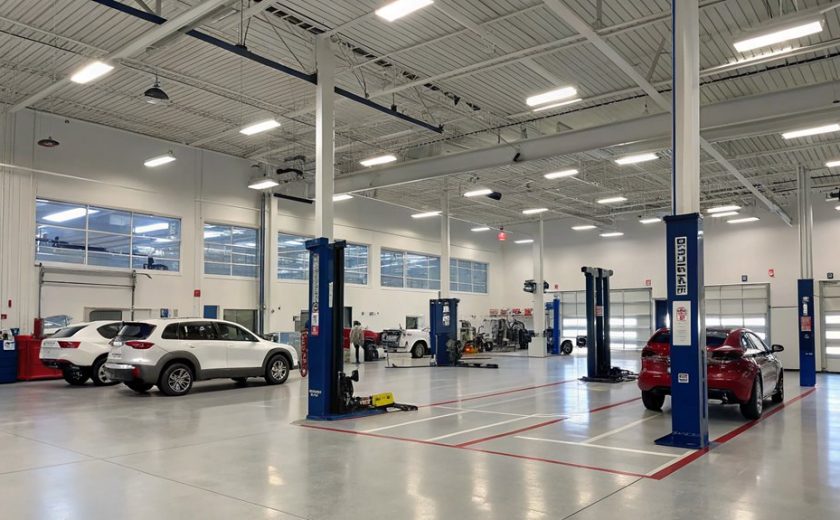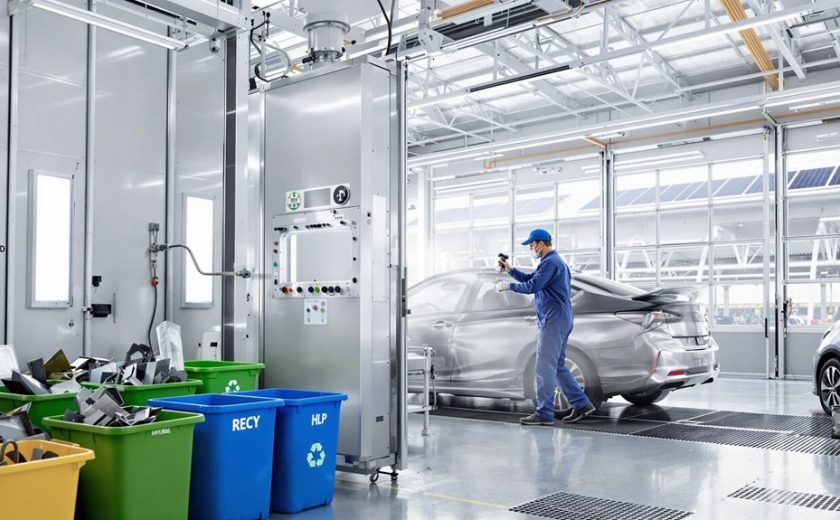When getting auto body repairs in Dallas, you’ll want to avoid five critical mistakes that can cost you time and money. Don’t rush the paint process or skip proper surface preparation, as Dallas’s heat and humidity demand proper curing time and thorough cleaning. Watch out for mismatched paint colors that can stand out in Texas’s bright sunlight. Be especially careful about hidden structural damage from collisions, which can compromise your vehicle’s safety. You’ll also need to avoid using poor-quality replacement parts. These common pitfalls can seriously impact your repair’s long-term success, but there’s much more to contemplate for lasting results.
Key Takeaways
- Rushing through paint jobs in Dallas’s hot climate can lead to bubbling and peeling, especially during summer months.
- Skipping proper surface preparation causes paint failure, particularly important in Texas’s extreme weather conditions.
- Using low-quality replacement parts compromises vehicle safety and leads to higher repair costs down the line.
- Failing to address hidden structural damage from collisions can create unsafe driving conditions on Dallas highways.
- Poor color matching results in obvious repair patches, affecting resale value in the competitive Dallas auto market.
Rushing the Paint Process
When it comes to auto body repair, rushing through the paint process can lead to disastrous results that’ll cost you more time and money in the long run. Each layer of paint needs proper time to cure, and skipping or shortening these vital drying times can result in peeling, bubbling, or uneven surfaces.
Your spray technique is equally important – rushing through the application can create runs, drips, or patchy coverage. You’ll need to maintain a steady hand and consistent distance while spraying to achieve an even coat.
Remember to work in a clean, well-ventilated area and apply thin, even layers rather than trying to cover everything in one thick coat.
Don’t skip the prep work, either. Taking shortcuts on sanding, priming, or masking will show in your final results. Each step builds on the previous one, and proper drying time between coats guarantees better adhesion and a lasting finish.
If you’re not confident in your painting skills, it’s better to let a professional handle the job than to risk damaging your vehicle’s appearance with a rushed paint job.
Neglecting Proper Surface Preparation
Proper surface preparation stands as the foundation of any successful auto body repair job. When you skip or rush through this vital step, you’re setting yourself up for disappointing results that’ll show up sooner rather than later. Many DIY enthusiasts make the mistake of jumping straight to painting without properly cleaning and preparing the surface.
One of the most common errors is inadequate sanding. You need to thoroughly sand the damaged area and its surrounding surfaces to create a smooth, even base for the new paint. If you don’t remove all the old paint, rust, or filler material, the new paint won’t adhere properly and could start peeling within months.
Surface contaminants are another major concern you can’t ignore. Dust, grease, wax residue, and other debris will prevent proper paint adhesion and create unsightly bumps or bubbles in your finish.
Before applying any primer or paint, you must thoroughly clean the surface with appropriate solvents and verify it’s completely dry. Don’t forget to use a tack cloth to remove any remaining particles that could compromise your paint job’s quality.
Mismatched Paint Colors
Even with perfect surface preparation, your auto body repair can fail if you don’t nail the paint color match. One of the most obvious signs of amateur repair work is when the new paint doesn’t blend seamlessly with the existing finish. This mismatch can greatly decrease your vehicle’s value and appeal.
Color matching isn’t as simple as picking a paint code from your car’s identification plate. Factors like sun exposure, weathering, and age can alter your vehicle’s original color. You’ll need to take these variables into account when selecting the right shade.
Furthermore, different paint types and application methods can affect how the color appears on your car’s surface. To achieve the best results, you should use a professional color matching system that factors in your car’s make, model, and year.
Don’t rely solely on visual matching, as lighting conditions can be deceiving. If you’re not confident in your ability to match colors accurately, it’s worth consulting a professional auto body shop. They’ve specialized equipment and expertise to guarantee your repair work blends perfectly with the surrounding areas, making the repair virtually invisible.
Ignoring Hidden Structural Damage
Although visible exterior damage may seem straightforward to repair, underlying structural problems can pose serious safety risks if left unchecked.
When your car experiences a collision, the impact can compromise your vehicle’s structural integrity in ways that aren’t immediately visible.
Don’t make the mistake of focusing solely on cosmetic repairs while ignoring potential hidden damage beneath the surface.
A thorough inspection by a qualified auto body professional can reveal critical issues that affect your safety and vehicle performance. They’ll use specialized equipment to detect problems that might compromise your car’s crash protection systems and overall stability.
Here are key areas where hidden damage commonly occurs:
- Frame rails and structural support beams that may be bent or weakened
- Misaligned suspension components affecting steering and handling
- Compromised crumple zones that won’t properly protect you in future accidents
- Damaged mounting points for safety features like airbags and seat belts
You’ll want to guarantee your repair shop performs a complete structural assessment before proceeding with repairs.
This step isn’t just about maintaining your car’s value – it’s about protecting you and your passengers from potentially catastrophic failures down the road.
Poor Quality Replacement Parts
When it comes to replacing damaged auto body parts, choosing cheap knockoffs or non-OEM components can lead to serious problems with fit, finish, and safety.
While low cost substitutes might seem appealing to your wallet initially, they often end up costing you more in the long run through additional repairs and adjustments.
These aftermarket parts frequently use subpar materials that don’t match your vehicle’s original specifications.
You’ll often notice problems like panels that don’t align properly, paint that doesn’t match exactly, or components that wear out much faster than OEM parts.
Even worse, these inferior parts mightn’t provide the same level of protection during an accident.
To avoid these issues, always insist on quality replacement parts from reputable manufacturers.
If cost is a concern, work with your auto body shop to explore certified used OEM parts as an alternative.
They’ll typically perform better than new aftermarket components.
Remember that your vehicle’s structural integrity and your safety depend on using properly manufactured parts that meet industry standards.
Don’t compromise on quality just to save a few dollars upfront.
Frequently Asked Questions
How Long Should I Wait Before Washing My Car After Repairs?
You’ll need to wait at least 30 days after repair work before car washing. Until then, avoid automated washes and stick to gentle hand washing for proper repair care.
Will My Car Insurance Rates Increase After Filing an Auto Body Claim?
Your insurance premium increase depends on fault, claim type, and history. If you’re not at fault, rates shouldn’t rise. Check with your provider during the claim filing process.
Can Small Dents Be Repaired Without Repainting the Entire Panel?
You’ll find that many small dents can be fixed through paintless dent repair, saving time and money. These techniques push the metal back into shape without damaging your car’s original paint job.
What Documentation Should I Receive After Completing Auto Body Repairs?
You’ll need detailed repair invoices listing all parts and labor, plus written service guarantees. Keep photos, insurance claim documents, and warranty information for your records.
Are Aftermarket Parts Covered Under My Vehicle’s Original Manufacturer Warranty?
Your vehicle’s original warranty won’t cover aftermarket parts. You’ll need to rely on separate aftermarket warranties for these components, and using them might violate manufacturer guidelines for warranty coverage.
Conclusion
When you’re getting auto body repairs in Dallas, don’t let these common mistakes compromise your vehicle’s restoration. Take time with paint application, properly prepare surfaces, guarantee paint colors match perfectly, address all structural issues, and use quality replacement parts. By avoiding these pitfalls and working with Stuart Paints And Body, you’ll get lasting results that maintain your car’s value and appearance.

